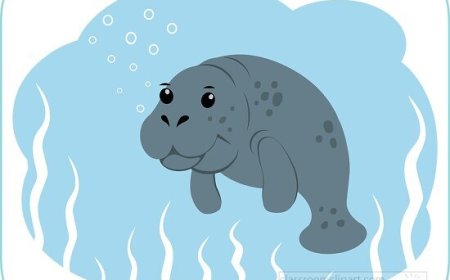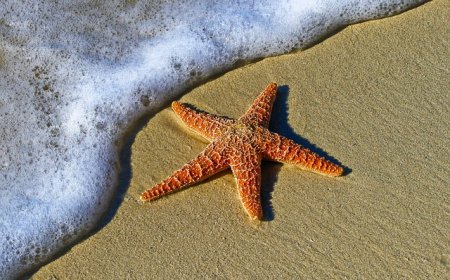Coral Facts for Kids – Tiny Builders of the Ocean’s Great Reefs
Learn about coral for kids. Discover how tiny coral polyps build reefs, where they grow, and why reefs need protection.
🪸 Coral: Tiny Builders of the Ocean’s Great Reefs
Corals may look like colorful rocks or underwater plants, but they are actually tiny animals that live in colonies and build some of the largest structures in the ocean—coral reefs.
Corals are part of a group called cnidarians, which also includes jellyfish and sea anemones. Each coral animal is called a polyp, and when thousands or millions of them live together, they create living underwater cities filled with fish, crustaceans, sea turtles, and more.
🌍 What Is Coral, Really?
A coral polyp is a tiny, soft-bodied animal with:
- A tube-shaped body
- A mouth surrounded by tentacles
- A hard skeleton made of calcium carbonate, which forms the reef
Most corals live in colonies and are no bigger than a pencil eraser. They grow on top of one another for thousands of years, creating reefs.
There are two main types of coral:
- Hard (stony) coral – build reef structures
- Soft coral – flexible and colorful, like sea fans
🪨 How Coral Reefs Form
Coral reefs form when polyps:
- Settle on a hard surface
- Secrete calcium carbonate (a rock-like material)
- Grow and divide, forming large colonies
- Build on top of older skeletons, growing upward and outward
Reefs can take thousands of years to form and can stretch for hundreds of miles.
Famous reefs include:
- The Great Barrier Reef in Australia (the largest)
- The Mesoamerican Reef in the Caribbean
- Coral atolls in the Pacific Ocean
🌞 Coral and Algae: A Special Partnership
Most corals rely on a partnership with microscopic algae called zooxanthellae. These algae:
- Live inside the coral’s tissues
- Photosynthesize, using sunlight to make food
- Share the food with the coral
- Help give coral its bright colors
This partnership allows corals to grow in clear, shallow water where sunlight can reach.
If corals get stressed (by heat or pollution), they can expel the algae, causing coral bleaching—a serious problem for reefs.
🐠 Life in the Reef: Coral’s Neighborhood
Coral reefs are often called the rainforests of the sea because they:
- Support 25% of all marine life
- Provide shelter, breeding grounds, and hunting areas
- Host thousands of species, including:
- Clownfish, sea turtles, sharks
- Crabs, shrimp, sea slugs
- Sponges, sea anemones, and more
These ecosystems are extremely biodiverse, meaning they have a wide variety of species living together.
🐣 Reproduction and Growth
Corals can reproduce in two main ways:
- Asexual reproduction – a polyp clones itself to grow the colony
- Sexual reproduction – corals release eggs and sperm into the water (spawning), usually during full moons
After fertilization:
- A coral larva floats in the ocean
- Finds a hard surface
- Settles and begins a new colony
Because corals grow slowly—only a few centimeters per year—damaged reefs can take decades or centuries to recover.
⚠️ Threats to Coral Reefs
Coral reefs are one of the most endangered habitats in the ocean. They face many threats:
- Climate change – warming oceans cause coral bleaching
- Ocean acidification – makes it harder for corals to build skeletons
- Pollution – from sewage, plastic, and chemicals
- Overfishing – removes reef animals that help coral survive
- Coastal development – destroys reef areas for tourism and construction
Scientists estimate that over half of the world’s coral reefs are in danger.
🛡️ Coral Conservation: Saving the Reefs
Many people and groups are working to protect corals through:
- Marine protected areas
- Reef restoration (planting coral “nurseries”)
- Climate action to reduce greenhouse gases
- Education programs about reef-friendly behavior
- Laws to ban damaging practices like blast fishing
Even individuals can help by:
- Using reef-safe sunscreen
- Reducing plastic use
- Supporting sustainable seafood
🎉 Fun Facts About Coral
- Corals are animals, not plants!
- Coral reefs can be seen from space
- Some colonies are over 5,000 years old
- Corals glow under UV light due to biofluorescence
- Coral skeletons form the backbone of entire ecosystems
🧠 Vocabulary List
- Polyp – A tiny coral animal with a soft body and tentacles
- Calcium carbonate – A hard material corals use to build reefs
- Zooxanthellae – Algae that live inside coral and help it get energy
- Bleaching – When coral loses its algae and turns white from stress
- Ecosystem – A community of living and non-living things in one place
- Spawning – When animals release eggs and sperm into the water
- Photosynthesis – How algae make energy from sunlight
- Reef – A structure built by coral animals over time
- Biodiverse – Full of many different types of life
- Marine protected area – An ocean zone with special rules to protect sea life
✅ Coral Quiz: How Reef-Smart Are You?
- What kind of animal is a coral?
A. Plant B. Rock C. Invertebrate animal D. Fish
Answer: C. Invertebrate animal - What do coral polyps use to build reefs?
A. Sand B. Calcium carbonate C. Bones D. Shells
Answer: B. Calcium carbonate - What are zooxanthellae?
A. Tiny fish B. Sunlight C. Algae that live in coral and give it food and color D. Seaweed
Answer: C. Algae that live in coral and give it food and color - What is coral bleaching?
A. Coral gets sunburned B. Coral glows in the dark C. Coral loses its algae and turns white from stress D. Coral explodes
Answer: C. Coral loses its algae and turns white from stress - Why are coral reefs important?
A. For building sandcastles B. They are colorful C. They support lots of marine life and protect coastlines D. They eat fish
Answer: C. They support lots of marine life and protect coastlines
🧒 Kid-Friendly Summary
Corals are tiny animals that live in the ocean and build big underwater homes called reefs. These reefs are full of fish, turtles, crabs, and more. Corals work with algae to grow and stay healthy.
But coral reefs are in danger from pollution, climate change, and overfishing. People around the world are helping by protecting coral, planting new colonies, and keeping the ocean clean—so reefs can keep being the amazing sea neighborhoods they are!



















































